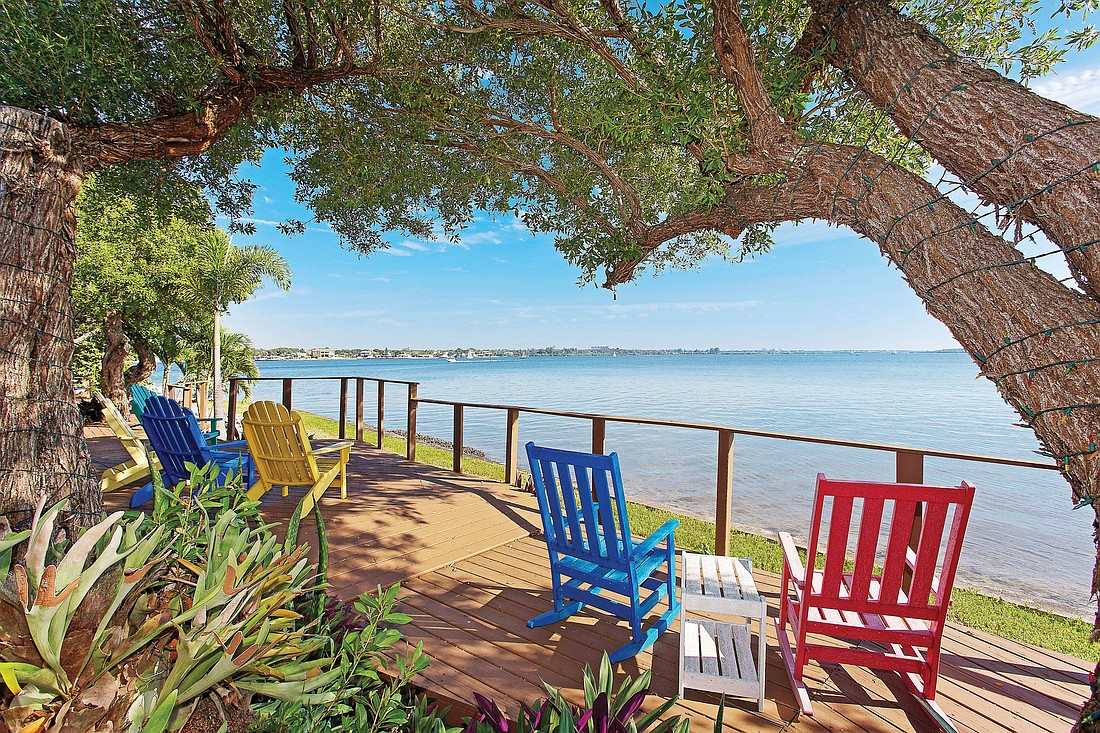- November 22, 2024
-
-
Loading

Loading

Florida has its share of literary shrines, the places where its greatest authors created their best work.
There’s the Hemingway House in Key West, Marjorie Kinnan Rawlings’ farmhouse in Cross Creek and the house in St. Pete where Jack Kerouac drank himself to death. But one of the most important is virtually unknown — the rustic beach house on Siesta Key where John D. MacDonald lived from 1952 to 1970. It was here, in a room above the garage, that the legendary Travis McGee was born.
Travis McGee, the knight in slightly tarnished armor, the rescuer of damsels in distress. Six-foot-four, powerfully built, deeply tanned, usually needing a shave. He and his creator pioneered a new kind of novel, one that changed American literature. The hard-boiled Florida crime novel soon came to dominate the bestseller lists and, not so incidentally, gave impetus to the burgeoning environmental movement. It was a cry to action against the corrupt forces that would destroy the delicate ecological balance for their own profit.
One look from the windows of MacDonalds’ second-floor study and workroom and it’s easy to see from where this passion came. The setting is spectacular. The room is modest in size but has full water views to both the north and the south. Birds swoop by, lizards dart here and there — even a few full-size iguanas — and tropical vegetation sways gently in the breeze. The only thing missing is the clacking of the typewriter as Travis begins another adventure.
***
That John and Dorothy MacDonald could afford such a house is a reflection of both Sarasota real estate prices back in the 1950s and MacDonald’s growing success as a writer. A prolific worker, he was a rising star in the genre of tough-guy fiction, with scores of successful novels under his belt. He wrote as many as four a year. The couple had already assumed a routine they would follow decades to come. The house on Siesta Key in the winter, then a trek north to the Adirondacks for a summer at the lake.
MacDonald’s book “The House Guests,” published in 1967, gives an evocative look at life on the Key back in those long ago days. Air conditioning hadn’t taken over; windows were left open and their beloved cats — the houseguests of the title — wandered in and out at will. Neighbors were always dropping by, often with injured wildlife, for they knew the MacDonalds were a soft touch for any wounded creature. Everybody in town knew everybody else and the social life was informal but active, especially for members of the town’s art colony, the writers and painters who originally gave Sarasota the cachet it still enjoys today.
The MacDonald home was also pretty typical of the way people lived back in those days. It was located on Point Crisp, a sandbar that inexplicably juts out into the bay about a mile or so south of the Stickney Point Bridge. Local lore says the home’s original owner, the man who developed Point Crisp residentially, won it in a poker game. It’s tempting to surmise that this inspired Travis McGee’s acquisition of his famous houseboat, the Busted Flush. It also was won in a poker game.
As they became more prosperous the MacDonalds enlarged the home, which stood on about an acre. They added a guesthouse and extended the living room. Dorothy, an accomplished amateur painter, used the former living area as her studio. But John always claimed the upstairs room — reached by a spiral staircase — as his own sanctuary.
The MacDonalds sold the house in 1970 and moved to a larger home that looked out over Big Pass, designed for them by their good friend, architect Tim Siebert. Over the years, the Point Crisp house went on to have a succession of notable owners. One of them, Richard Peterson, became famous for an adventure that seems right out a MacDonald book. A TWA pilot, he was flying a 727 from Rome to Athens, Greece, in April 1986, when a terrorist bomb went off. Four passengers were killed and a large hole was blown in the side of the plane, but Capt. Peterson kept his head and landed the plane safely in Athens. He became the Sully Sullenberger of his day.
Later, Dr. Masood Rehmani, a prominent child psychiatrist who spent 30 years working in Sarasota, treating private patients and developing programs with local hospitals and school boards, bought the Point Crisp home. The doctor’s brother, Qamar, recalls how the home’s gentle tropical atmosphere and many fruit trees — mango and lychee — reminded his brother of his native India. Full circle, in a way — MacDonald’s first published story was entitled “Interlude in India” and dealt with his experiences in New Delhi during World War II.

***
Rehmani died recently and the Point Crisp home has come on the market. Even MacDonald would be realistic enough to accept the fact that, for all its history and charm, whoever buys the place will probably tear it down and replace it with a $10 million mansion — it’s the last beach shack left on Point Crisp, an anomaly next door to its glamorous, almost overpowering neighbors. The price tag certainly reflects the unique location — an eye-popping $3.2 million.
But if his birthplace is disappearing, Travis McGee is getting a second wind. The series is finding a whole new generation of readers thanks to e-books, and 20th Century Fox is planning a film version of “The Deep Blue Good-Bye.” Variety reports that Christian Bale is the leading contender for the role of Travis.
Not bad for a character dreamt up in a room over a garage on Siesta Key more than 50 years ago.
1430 Point Crisp Road is priced at $3.2 million. For more information, call Deborah Beacham (376-2688) or Larry Zeigler (228-2612), both of Michael Saunders & Co.
